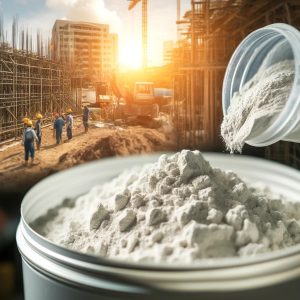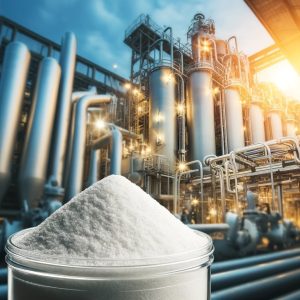Enhancing Industrial Performance: Versatile Applications of Sodium Gluconate
Sodium gluconate, a sodium salt of gluconic acid, is a highly versatile chemical with numerous industrial applications, making it a valuable asset for construction and infrastructure projects. Its unique properties, including excellent chelation, biodegradability, and non-toxicity, make it an indispensable additive in various industrial processes. This article explores the diverse applications of sodium gluconate, focusing on its use in water treatment, as a concrete admixture, and its role in enhancing drilling operations.
Concrete Admixture: Enhancing Durability and Workability
In the construction industry, sodium gluconate is widely used as a concrete admixture. It acts as a powerful plasticizer and retarder, improving the workability and durability of concrete. By slowing down the setting time of concrete, sodium gluconate allows for more extended periods of work, which is particularly advantageous in hot weather conditions or large-scale projects where delays might occur.
Additionally, sodium gluconate enhances the water-to-cement ratio, creating a more homogenous and workable mix. This results in concrete with better mechanical properties, increased strength, and reduced permeability. The improved durability ensures structures can withstand environmental stressors, providing long-term benefits and reducing the need for repairs and maintenance.
 Water Treatment: Effective Descaling and Corrosion Control
Water Treatment: Effective Descaling and Corrosion Control
One of the primary uses of sodium gluconate is in water treatment, where it serves as an efficient descaling and corrosion control agent. Its excellent chelating properties enable it to bind with metal ions such as calcium, iron, and magnesium, preventing them from forming scale deposits. It helps maintain the efficiency of heat exchangers, boilers, and cooling towers, reducing maintenance costs and downtime.
Moreover, sodium gluconate’s ability to form stable complexes with metal ions effectively prevents corrosion. By inhibiting the oxidation of metal surfaces, it extends the lifespan of water systems and pipelines. This attribute is particularly beneficial for industries that rely heavily on water circulation systems, ensuring their longevity and optimal performance.
Drilling Operations: Reducing Fluid Loss
In drilling, sodium gluconate plays a crucial role as an additive in drilling fluids. Its ability to stabilize and maintain the viscosity of drilling muds is essential for efficient drilling operations. By reducing fluid loss, sodium gluconate helps maintain the integrity of the borehole, preventing complications that can arise from excessive fluid penetration into the surrounding formations.
Using sodium gluconate in drilling operations also improves the overall efficiency of the process. It minimizes the risk of wellbore instability and enhances the performance of drilling fluids, ensuring smoother and more cost-effective drilling activities. It is particularly important in the oil and gas industry, where operational efficiency directly impacts profitability.
Conclusion
Sodium gluconate’s versatile applications across various industrial sectors highlight its significance in enhancing industrial performance. From water treatment to concrete admixtures and drilling operations, its unique properties offer substantial benefits, including improved efficiency, reduced maintenance costs, and enhanced durability. For businesses involved in construction and infrastructure projects, sodium gluconate provides a reliable and effective solution to meet their diverse needs.
By incorporating sodium gluconate into their processes, companies can achieve greater operational efficiency and long-term performance, ensuring the success and sustainability of their projects. As industries continue to seek innovative solutions to optimize their operations, the role of sodium gluconate as a multifaceted additive will undoubtedly remain indispensable.